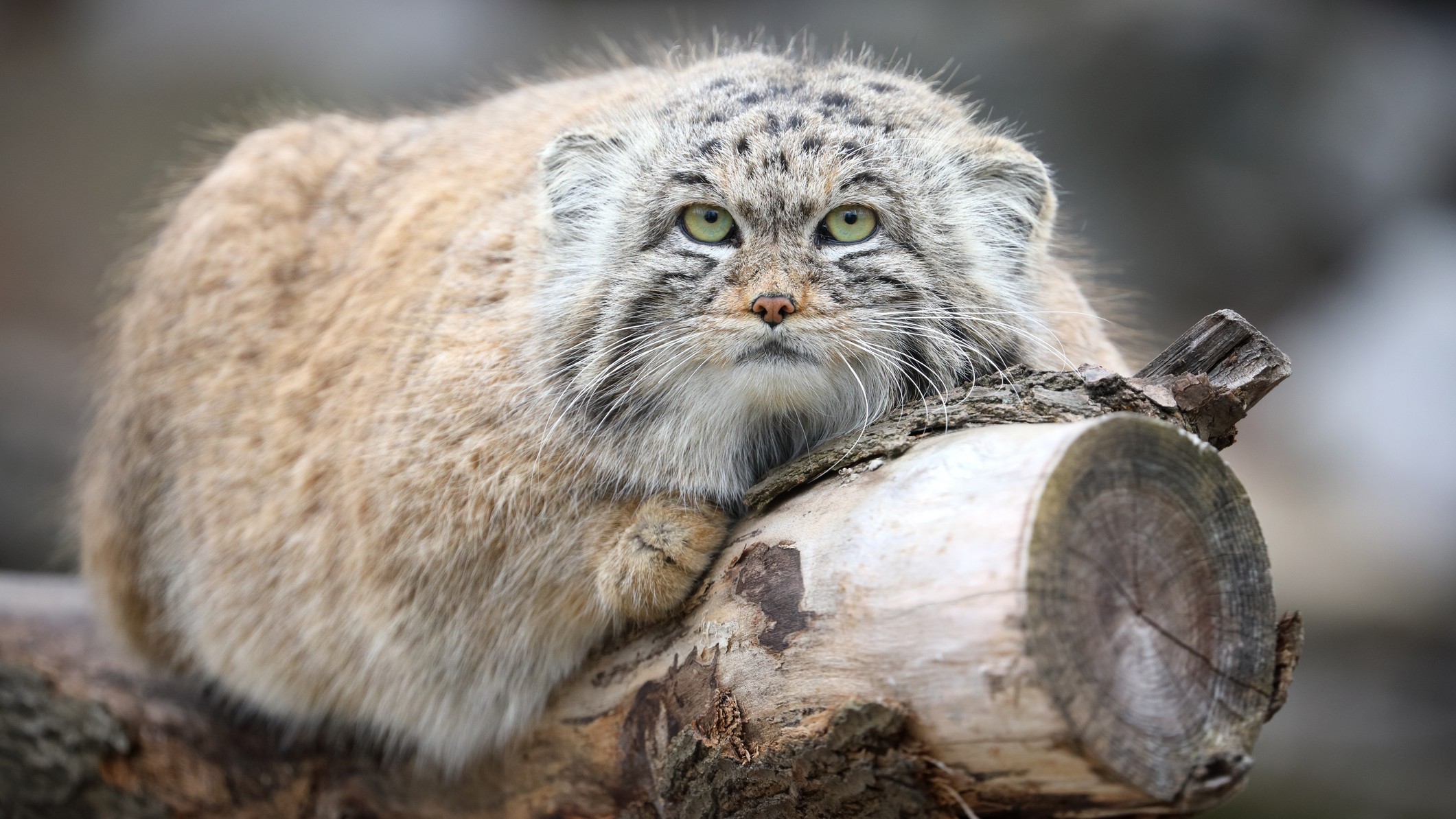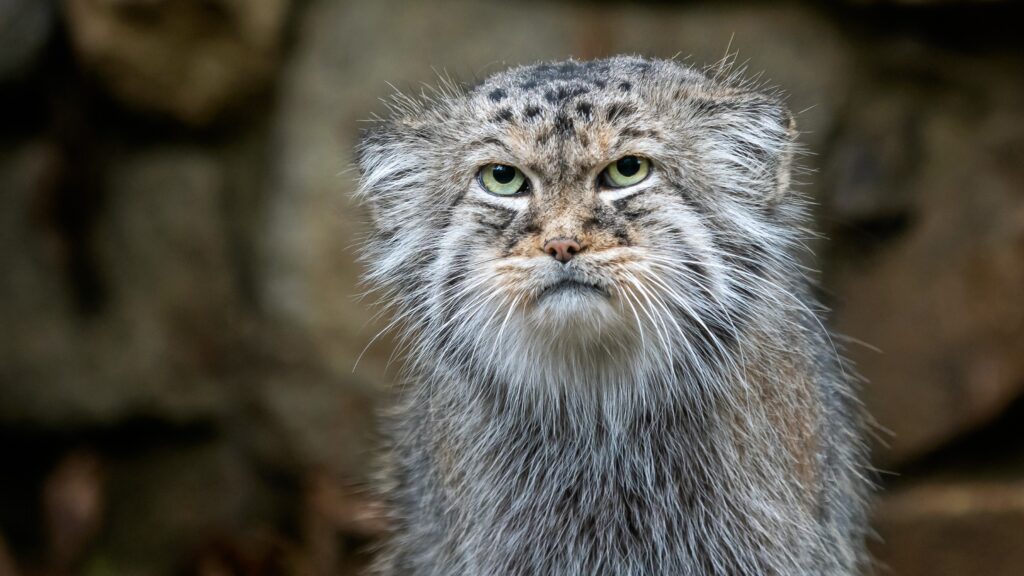QUICK FACTS
Name: Pallas’s cat (Otocolobus manul)
Where it lives: Steppes and high-elevation grasslands in Central Asia, particularly Mongolia and China
What it eats: Small rodents, including gerbils, hamsters and pikas, small lizards and birds
Pallas’s cat, also known as a manul, is a feline from Central Asia that yelps like a small dog and has such short legs that it sometimes struggles to run after prey. Researchers think it is one of the oldest living cat species in the world, having diverged 5.2 million years ago from a leopard ancestor.
Although it looks stocky, Pallas’s cat isn’t actually much bigger than a domestic cat beneath its long, dense fur. This thick coat provides insulation against its environment, the freezing cold of Central Asia’s steppe and high-altitude grassland ecosystems. The species is rarely seen because it is solitary and very secretive, spending the daytime in rock crevices and marmot burrows.
Pallas’s cat comes out at dusk to hunt and stays out until dawn. It is an ambush predator, meaning it waits at the exits of rodent burrows until its prey appears — although some cats also stick their paws in to scoop out a meal, according to the Smithsonian’s National Zoo & Conservation Biology Institute.
Even if Pallas’s cat is active during the day, the feline is hard to spot. Its coat is usually gray or light tan, but it can change color with the seasons to better blend into the local landscape, according to the National Zoo. Most of the hairs also have white tips, giving the cat a mottled or frosted appearance that is difficult to distinguish from rocks and shrubs in its natural surroundings.

For even more camouflage, Pallas’s cat has rounded ears set so low on its head that it can peer over rocks without its ears peeking out. The only part of its body that protrudes is its bushy tail, which is about half as long as the head and body combined, according to the Felidae Conservation Fund.
Unlike other small cats, which have slit-like pupils, Pallas’s cat has rounded pupils that are good for judging distances. The cat also yelps when it is scared or excited, which makes it sound more like a small dog than a feline, according to the National Zoo — but the species purrs and growls like any other small cat.
In the wild, Pallas’s cat typically lives eight to nine years, according to the National Zoo. The cat uses scent to mark its territory, which is unusually large for such a small feline, with a range typically covering 3.5 to 7 square miles (9 to 18 square kilometers).
Pallas’s cats are known to keep their paws warm by standing on their own tail, according to Edinburgh Zoo, but it’s unclear whether a cold climate explains the feline’s grumpy appearance.
